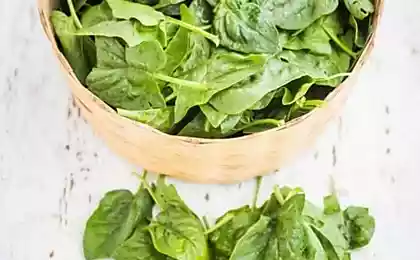883
Useful properties of parsnip.

Vegetable parsnips: structure and medicinal properties of the fruit, the root of parsnip
Botanical name - parsnip.
Family - umbrella.
Rod - parsnips.
Predecessors - potatoes, cabbage, onions, cucumber.
Lighting - a sunny place.
The soil - peat, sandy, loamy.
Planting - seeds.
The origin of the plant and its growing parsnips
Biennial vegetable plant parsnip cultivated worldwide. He is considered the homeland south of the Ural Mountains and the Altai Territory. Pasternak is known from the end of the XII century. In Russia, he appeared even earlier than potatoes. Grow it quite easily. Cultivated and developed it as well as carrots. Very often, they even grow together. In the first year formed root, the second year the plant blooms and produces seeds. The main difference is that its roots greater than carrots. This should be considered when planting seed - the distance between them should be somewhat greater than that between the carrot seeds. Seeds are planted in the spring. For best germination should be two of the day soak in water. When these leaves, crops thinned out. The plant is cold-resistant and moisture-loving. To the roots are not cracked, should ensure regular watering plants. In the autumn, before the onset of cold weather harvest. In the case where the roots are left in the ground in winter, they should be cut and leaves okuchit. In winter, these will need to dig up the roots before they again begin to grow leaves.
The plant should be protected from caraway moths, bacterial wet rot, Septoria, white and gray mold and black spot on.
Useful properties of parsnip
Useful properties of parsnip was known in ancient times. Ancient Greek physicians used it as an analgesic and diuretic. It stimulates the appetite, improves sexual activity, helps with colic. Medicinal properties of parsnip recognized and modern doctors. Widely used this vegetable in folk medicine. A decoction of the roots helps with coughs, and water infusion is used as a tonic in the rehabilitation of critically ill patients. Vegetable improves digestion and strengthens the walls of capillary vessels. Broth help in the treatment of baldness. In medicine, it is also used for the prevention and treatment of vascular and cardiac diseases.
Vegetable used in dietary nutrition. When kidney stones and gallstones. When nerve diseases, bronchitis, gout, pneumonia.
Vegetable juice is rich in silicon, potassium, phosphorus, chlorine, sulfur. Its use helps to strengthen brittle nails. Chlorine and phosphorus, beneficial effect on the lungs and bronchi. Therefore, the juice is recommended to drink sick emphysema, pneumonia and tuberculosis. Potassium improves brain function, because of this juice is successfully used in the treatment of various mental disorders.
The fruit used for the manufacture of medicaments that successfully treat various skin diseases. In particular - vitiligo. The leaves are used in dermatology.
Vegetable comprising mineral salts, sugars, proteins, essential oils and fatty many vitamins and minerals. Pectin, starch, cellulose. The seeds contain coumarin and glycosides.
The roots and leaves are widely used in cooking. They are dried, boiled, stewed, prepared from these salads. Used as a spice and added to the confectionery. Like potatoes, this vegetable is black when cutting. To avoid this, cut pieces should be dipped in water. The optimum cooking time for small pieces - ten minutes. For large - twenty. Then they will remain soft and do not have time to soften to a state of mashed potatoes. Cooked roots resemble sweet walnut. They can be baked or steamed. Vegetable parsnips can be a good side dish with fish or meat. Some dishes use it instead of the beet - such as vinaigrette.
Parsnip flowers, leaves, stems and roots, parsnip photos
Flowers bisexual parsnip. The correct form, fine. Five-membered. The collected umbrellas in the complex of 5 - 15 rays. Wraps are usually absent. Calyx imperceptible. Corolla has a bright yellow color. They can see in the photo parsnip. The flowers appear in late summer. In September, the fruits appear. They represent ploskoszhatuyu round - elliptical narrow-winged dvusemyanku. Bees with flowers of this plant are collected light honey of high quality.
The root of the parsnip is white. It has a sweet taste and a pleasant smell. The form can be like a turnip - round and like a carrot - cone. In the context of a yellowish color - brown or yellowish - gray.
Stem height of one meter. Erect, branched, rough, hairy, ostrorebristaya, grooved-faceted.
Leaves imparipinnate parsnip large size with blunt edges. From above they are smooth and rough bottom. Of the several pairs of ovate or lobed krupnopilchatyh pubescent sessile leaves. Bottom of them are short, but the upper leaves with vaginal base. Leaves in the hot days of release essential oils. They are quite burning and can burn the skin. For this reason it is best to engage in the care of plants or in the early morning or late evening.























